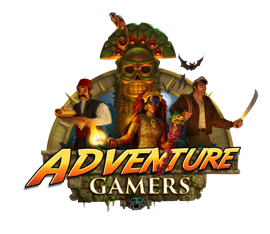Review for Rauniot
Nearly fifty years ago, in 1975, an inexplicable global disaster reshaped the Earth. Oceans consumed continents, and nuclear pollution devastated the planet's natural resources. Humanity’s survivors were thrust into a harsh, post-apocalyptic world ruled by sorrow, despair, and death. The remnants of civilization lay in ruins.
This is the backdrop for Rauniot (Finnish for “ruins”) by Act Normal Games. Set in an alternative-history earth, it employs a classic point-and-click interface within an isometric 2.5D perspective.
The story unfolds in Lapland, Finland, six years after the catastrophe. You play as Aino, a survivor tasked with locating a fabled nuclear train rumoured to hold the key to her community’s survival. Her mission takes a personal turn when her partner, Toivo, disappears, leaving her to find both him and the train.
Rauniot is presented in Finnish, with an English main menu and optional subtitles available in multiple languages. Few games come to mind that are initially presented in Finnish or set in this region, which adds a unique touch. This choice also enhances the credibility of the alternative history storyline, as you come to understand that the disaster has not only devastated the United States (a staple of almost every disaster movie) but has also spread to nearly every corner of the globe.
The game showcases a vintage aesthetic reminiscent of the late 1970s to early 1980s, blending steampunk influences with contemporary technology. The locations are impressively photorealistic, featuring intricately detailed outdoor settings. Whether outside, indoors, or underground, each location conveys a consistent sense of desolation and decay. This is also the case with the sound design. Abstract music and ambient sounds blend seamlessly with the graphics to create an overall atmospheric experience. You may not pay attention to them on occasion, but they are always there, enhancing the sense of loneliness.
Controlling Aino is straightforward: the left mouse button moves her, while the right opens the map, inventory, and menu. The map section includes notes, passwords, mission details, information about each character, and a geographic chart that supports fast travel. This fast-travel system is one of the game’s standout features. It enables the player to seamlessly move between and within locations—a convenience especially welcome given the substantial backtracking required.
The puzzles in Rauniot are story-driven and logical, with relatively increasing complexity as the game progresses. Clues are cleverly embedded in dialogue and environmental details, rewarding careful observation and note-taking. I resorted to a walkthrough on certain puzzles where I felt completely at a loss for the solution.
There is a lot of pixel hunting; sometimes too much of it. You will have to search every location meticulously for puzzles or clues. Some buttons and control panels, as well as an important can of dog food, are too small to be detected at first sight. Luckily, they are highlighted as the cursor hovers over them. Still, there were certain points where Rauniot felt more like a hidden object game than an adventure game.
While the plot is relatively thin, serving more as a prelude to a deeper narrative, it provides a solid foundation for Aino’s interactions with other survivors. These characters, ordinary people thrust into extraordinary circumstances, are shaped by their post-apocalyptic reality. Each encounter reveals backstories filled with tragedy, creating a mosaic of human resilience and despair. Aino’s story unfolds gradually, occasionally intertwining with those of others to paint a poignant picture of a shattered world.
Conversations in Rauniot are slow-paced, with minimal animation and static facial expressions. While you can click to speed up dialogue, this mechanic quickly becomes repetitive and tiresome, and risks skipping important lines. Voice acting lacks emotional range. Aino’s tone remains consistent whether she’s getting caught in a clever trap, comforting a little girl, trying to reclaim her stolen items, or attempting to convince a nomad to let her enter an enclosed compound. Other characters’ voices also do not shift their tone. While this could reflect the exhaustion and hopelessness of the setting, it often feels more like mediocre voice acting than deliberate artistic choice.
There are more than a few loading screens throughout the game. They feature pretty, hand-drawn conceptual art portraying game locations, but they are overly frequent and intrusive, disrupting the game’s pacing. This design choice detracts from the otherwise seamless immersion.
Despite its shortcomings, Rauniot is a compelling and thought-provoking game. Its strong characterizations, overall atmosphere, and logical puzzles offset its sparse plot and design flaws. The game’s exploration of human resilience amid despair resonates deeply. There is an underlying sense of imminent danger, of a similar catastrophe just waiting to happen any minute. It prompted me to ask myself how I would survive similar circumstances. Would I be a fighter, like Aino, or succumb to despair? The game’s ambivalent ending left these questions unanswered. Maybe it’s for the best.
WHERE CAN I DOWNLOAD Rauniot
Rauniot is available at:
We get a small commission from any game you buy through these links (except Steam).Our Verdict:
While not without its flaws, Rauniot delivers an immersive, atmospheric experience with relatable characters and a vividly realized post-apocalyptic world. Its innovative fast-travel system and logical puzzles shine, even as thin storytelling and strange design choices occasionally hold it back.












__medium.jpg)
















